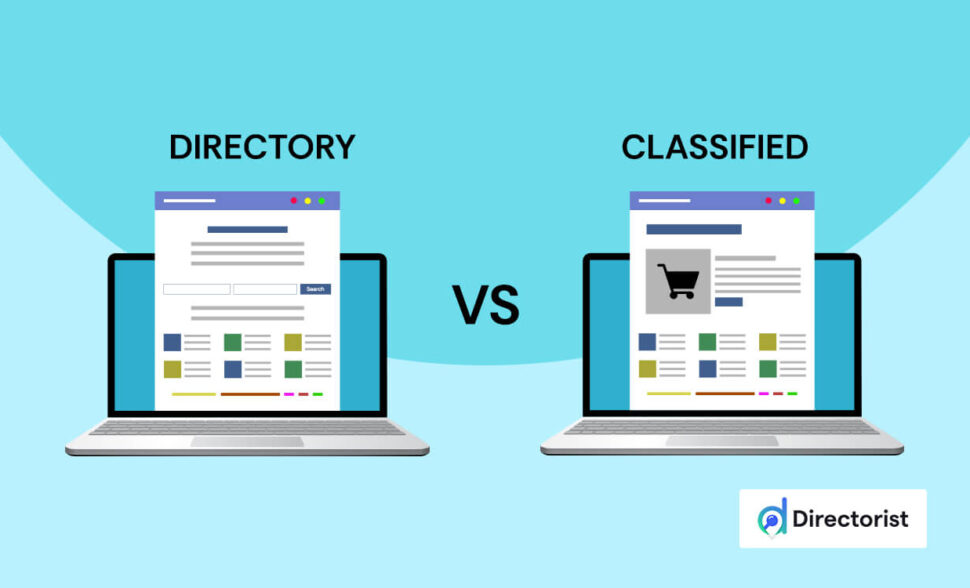Directory vs Classified Listings: Which Is Better for Your Website?
Which listing model is right for your website—directory or classified? With the growing amount of content online, choosing the right structure can impact your site’s user experience and revenue potential. Studies show that businesses with well-organized listings see 50% more user engagement.
Directories offer a structured, categorized approach, ideal for businesses wanting to provide detailed information with advanced search filters. Classified listings, on the other hand, are simpler, allowing users to post individual ads with minimal sorting.
In this article, we’ll explore the key differences and benefits of each, helping you choose the best option for your website’s needs.
What are Classified Listings?
Classified listings are advertisements or posts organized into categories that help users quickly find specific products, services, or information. These listings are a common feature in directories, websites, and publications that connect buyers and sellers. They are typically used for purposes like selling goods, offering services, real estate, job postings, and more.
Key features of classified listings
- Categorization: Listings are grouped into categories (e.g., vehicles, jobs, real estate) to make it easier for users to find relevant information.
- Brief descriptions: Each listing provides concise details about the product, service, or offering, often including a title, description, price, and contact information.
- User submission: Sellers or service providers can submit their listings, usually through a user-friendly form.
- Time-bound: Many classified listings are time-sensitive, often valid for a set duration, such as 30 or 60 days.
- Visibility options: Some platforms allow users to promote their listings through featured spots, highlights, or boosted visibility.
Examples of classified listings
- Product sales: Advertisements for items like furniture, electronics, and second-hand goods.
- Job postings: Listings where employers advertise open positions.
- Real estate: Properties for sale or rent.
- Services: Offers from professionals such as tutors, plumbers, or mechanics.
- Community: Announcements for events, lost and found, or personal ads.
Benefits of classified listings
- Cost-effective advertising: Often free or inexpensive compared to traditional advertising.
- Wide reach: Many websites and publications have extensive user bases, increasing visibility.
- Targeted audience: Users can browse by category, ensuring they see relevant ads.
- User-friendly: Easy to post and search for ads, making it accessible for all users.
Popular platforms like Craigslist, Gumtree, and OLX exemplify classified listing websites, providing a hub for buyers and sellers to connect. For businesses or individuals looking to create a classified listing site, tools like WordPress themes (e.g., dClassified) and plugins (e.g., Directorist) are valuable for building and customizing such platforms.
What Do You Mean by Directory Listings?
Directory listings refer to a structured catalog of entries or information within a specific category, location, or industry. These listings are commonly featured on websites or platforms designed to organize and display detailed data about businesses, services, individuals, or other entities in a systematic manner. Directory listings aim to provide users with quick and easy access to relevant information for a specific purpose.
Key components of directory listings
- Title or name: The primary identifier, often the name of a business, service, or individual.
- Description: A brief summary or overview of the listing’s purpose or offerings.
- Contact information: Details like phone numbers, email addresses, and website links.
- Category and location: Information categorized by type (e.g., restaurants, doctors) and location (e.g., city, region).
- Additional details: These might include business hours, images, reviews, pricing, or maps.
Examples of directory listing platforms
- Google My Business: Free tool to manage business presence on Google Search and Maps.
- Yelp: User-generated reviews and business directories across various sectors.
- Yellow Pages: Classic platform for business information.
- Zillow: Real estate directory for buying, renting, or selling properties.
- TripAdvisor: Travel and tourism directory featuring accommodations, restaurants, and attractions.
- Indeed: Job directory with listings from various employers and recruiters.
Benefits of directory listing platforms
- Cost-effective advertising: Often free or inexpensive compared to traditional advertising.
- Wide reach: Many platforms have extensive user bases, increasing visibility.
- Targeted audience: Users can browse by category, ensuring they see relevant ads.
- User-friendly: Simple to post and search for ads, making it accessible for all users.
Comparison of Features in a Flash
| Feature | Classified Listings | Directory Listings |
|---|---|---|
| Purpose | Selling or renting items | Listing services or businesses |
| Structure | More flexible; individual ads categorized by type | More structured; organized by business type |
| User Engagement | Two-way interaction between buyers and sellers | Primarily one-way; users search for services |
| SEO Potential | High potential due to varied content and keywords | Also strong, but relies on comprehensive service descriptions. |
| Monetization Options | Can charge for ads or featured listings | Often charges businesses for listing or premium placements. |
Directory vs Classified Listings- Key Differences
Understanding the distinctions between directory listings and classified listings is essential for effectively navigating online platforms for buying, selling, or promoting services. Here are the primary differences:
Purpose and focus
- Classified Listings: These are primarily designed for listing items for sale, rental, or services. They are often focused on individual transactions where users can post ads for specific goods or services, such as furniture, vehicles, or job opportunities.
- Directory Listings: In contrast, directories are intended to list businesses or individuals offering services. They serve as a comprehensive resource where users can find service providers across various industries, such as freelancers, restaurants, or local businesses.
Structure and organization
- Classified Listings: Typically organized into specific categories (e.g., real estate, automotive), classified ads allow users to create individual listings with detailed descriptions and contact information. This structure helps users search for specific items or browse through categories efficiently.
- Directory Listings: Directories tend to have a more rigid structure that categorizes listings by business type or service offered. They may include additional details like ratings, reviews, and contact information to facilitate user decision-making.
Scope and scale
- Classified Listings: Often localized, classifieds cater to specific regions or niche markets. They focus on connecting local buyers and sellers for quick transactions.
- Directory Listings: Directories usually have a broader scope and can include listings from various geographic areas. They aim to connect users with service providers on a larger scale, which may include national or international options.
User interaction
- Classified Listings: Users typically interact directly with sellers through contact information provided in the ad. The platform usually does not mediate the transaction but offers a space for communication between buyers and sellers.
- Directory Listings: Users may find additional features such as user reviews and ratings that help them assess the quality of listed services. Some directories also offer advanced search functionalities to filter results based on specific criteria like location or service type.
Monetization
- Classified Listings: Often monetized through ad placements where users pay to post their ads. The pricing structure may vary based on the number of lines or words used in the ad.
- Directory Listings: These may also charge businesses for listing their services but often include subscription models or premium features that enhance visibility within the directory.
Final Thoughts
Directory listings and classified listings serve distinct yet complementary purposes in the digital ecosystem. Directories focus on creating a structured, long-term presence for businesses or services, emphasizing detailed profiles, credibility, and discoverability through features like reviews and SEO optimization.
In contrast, classified listings prioritize short-term advertisements, offering quick visibility for specific items, services, or jobs. Choosing between the two depends on your goals: directories excel in building trust and sustained engagement, while classifieds are ideal for immediate transactions and time-sensitive offers. Together, they can provide a comprehensive strategy for reaching and engaging your target audience effectively.




Leave a Reply
You must be logged in to post a comment.